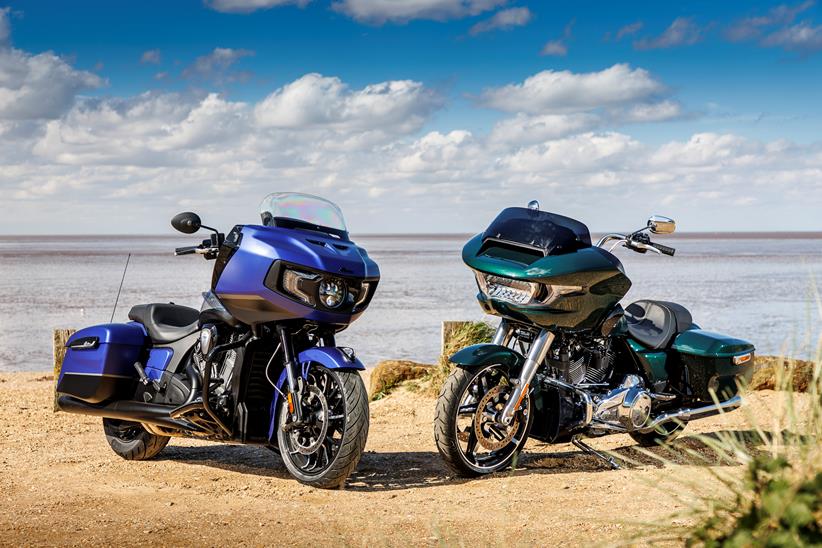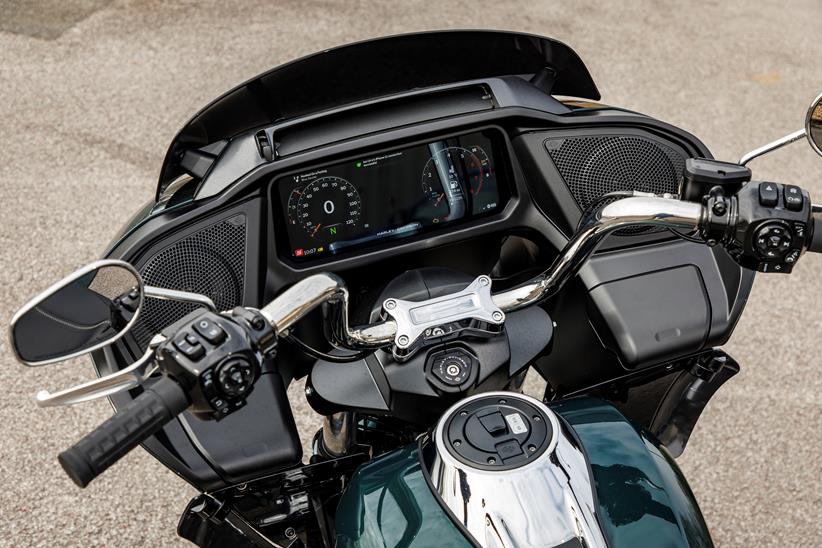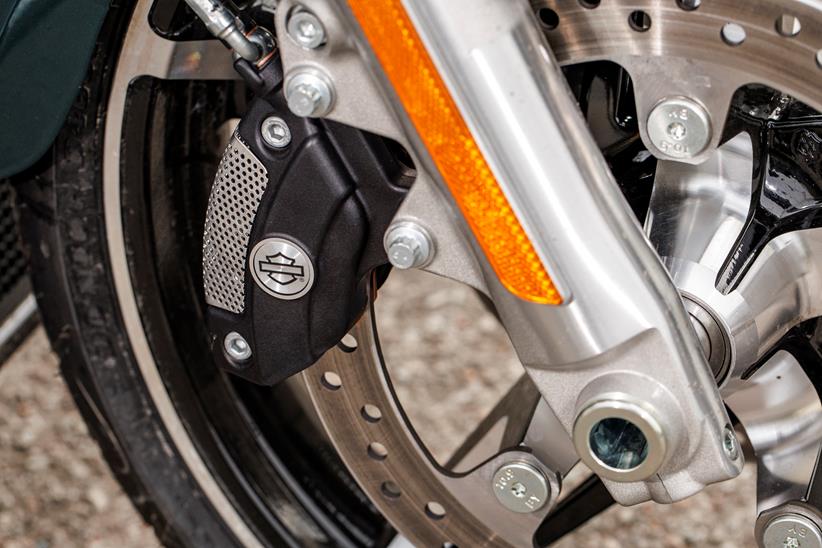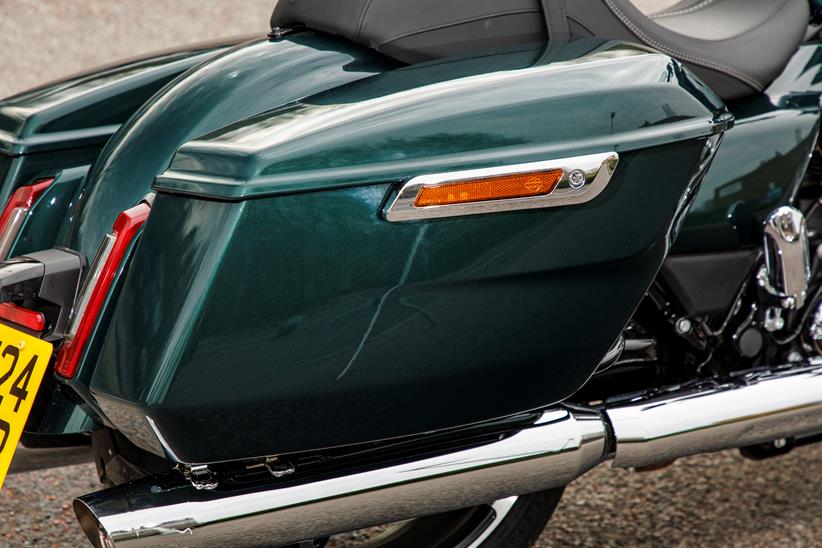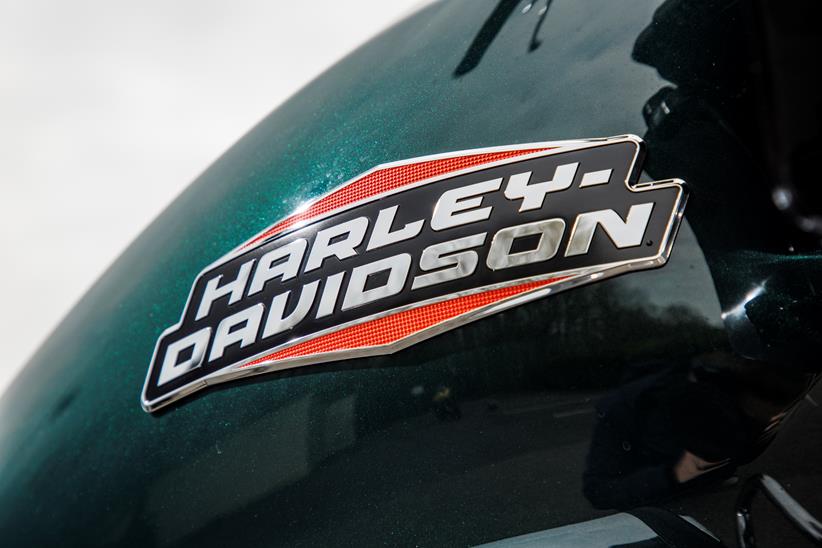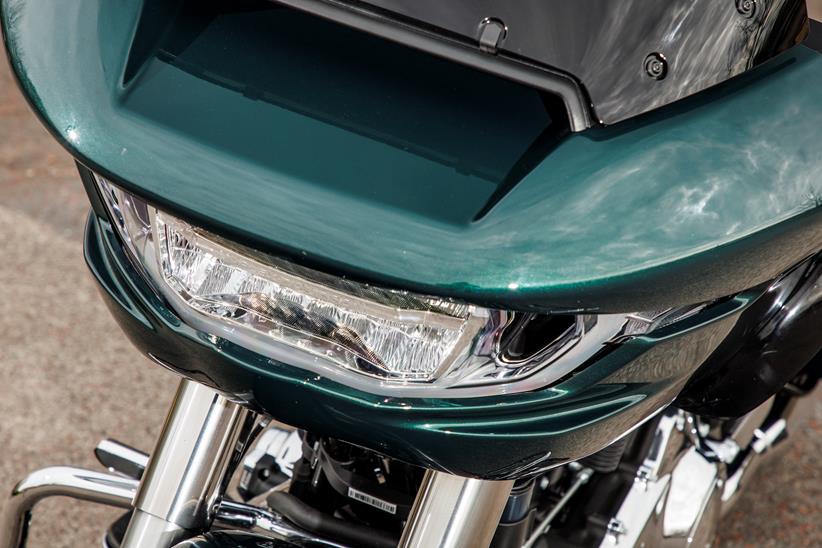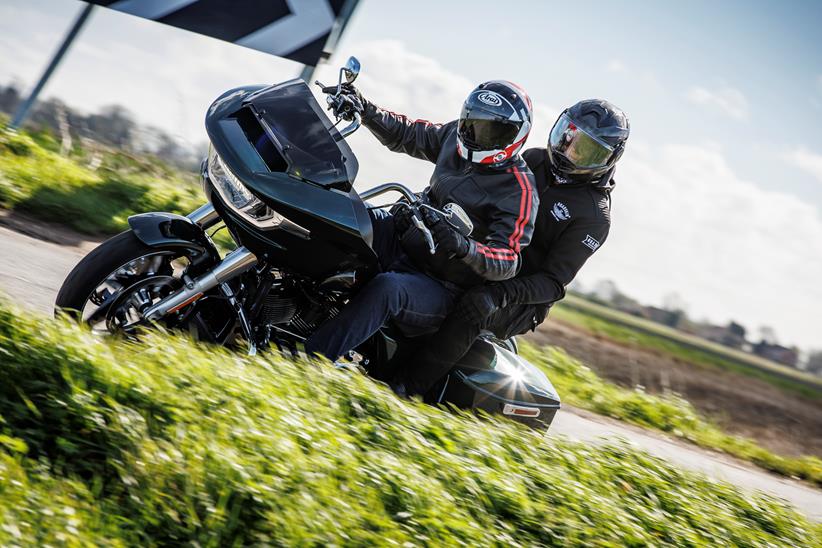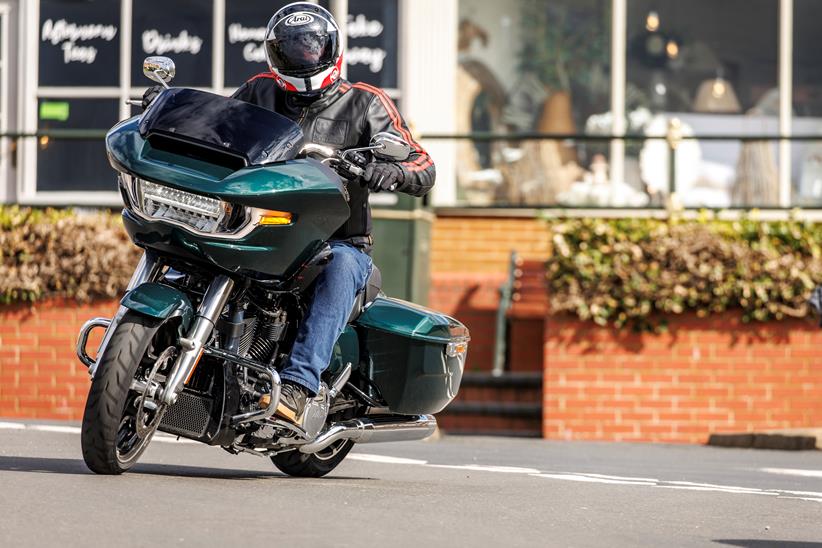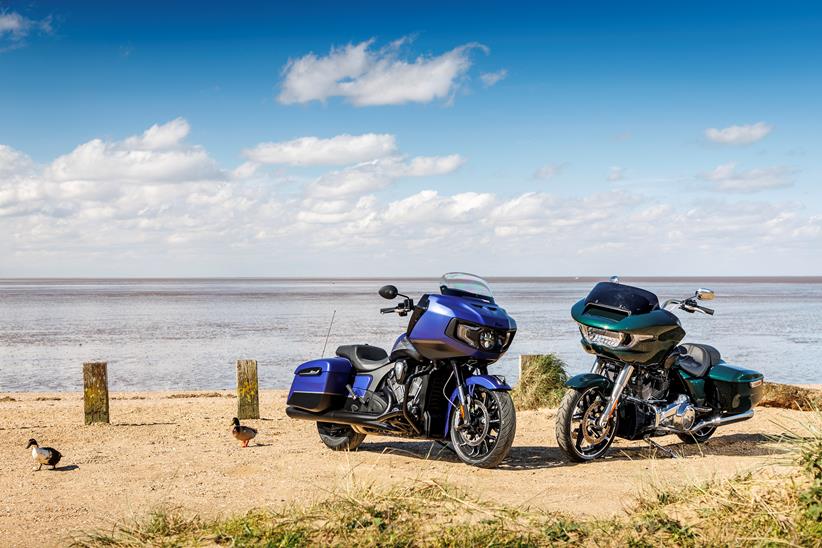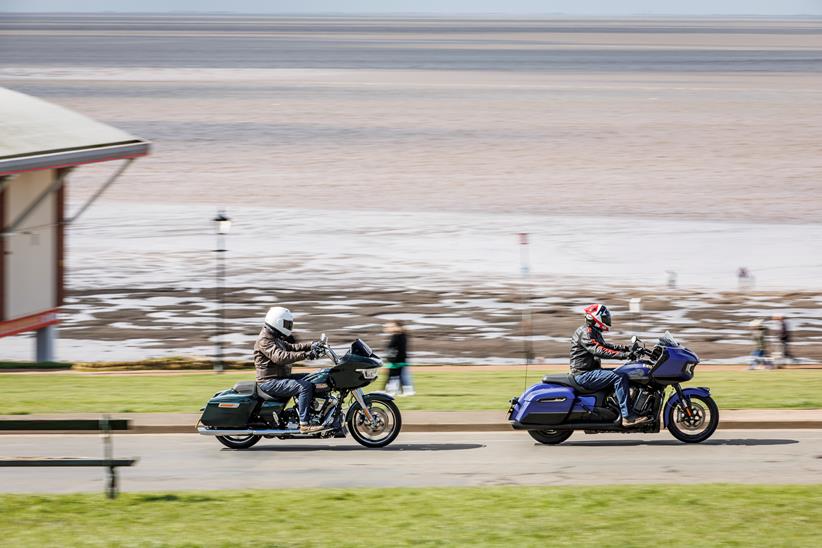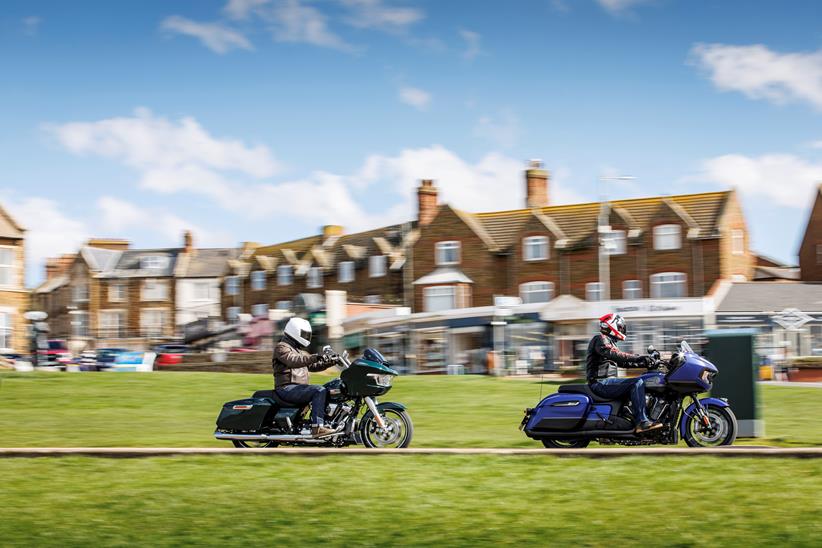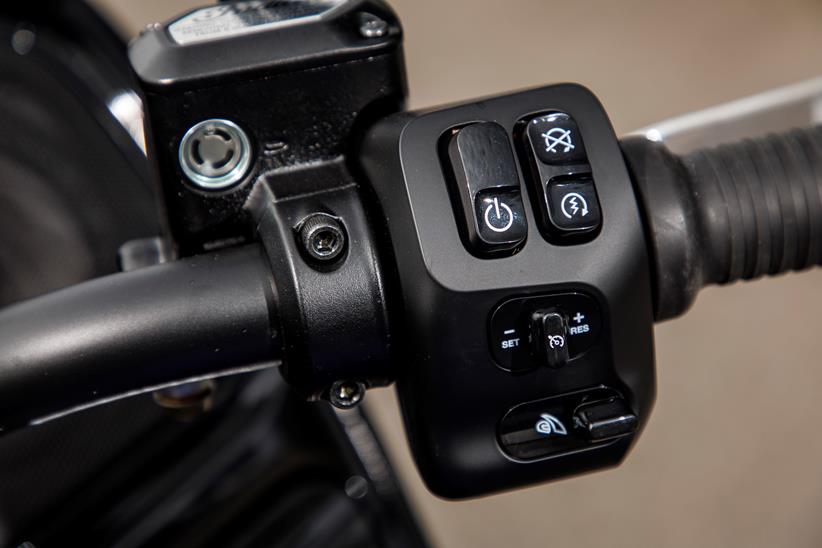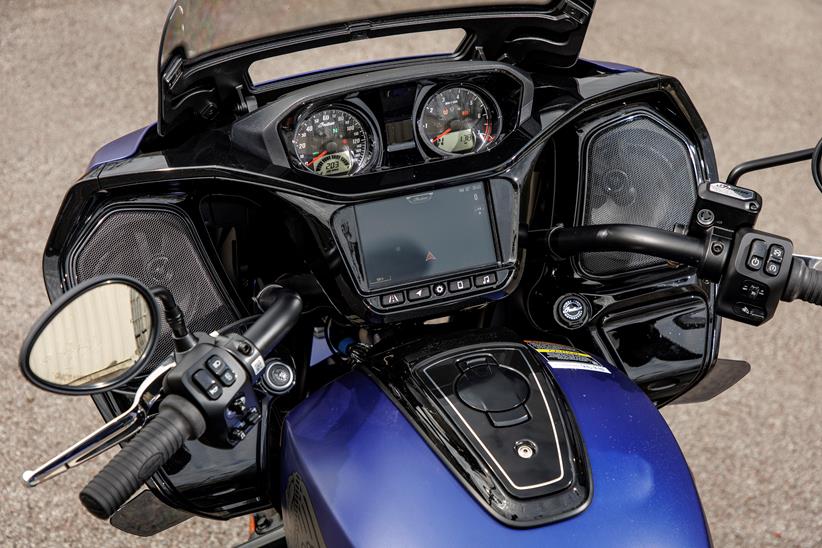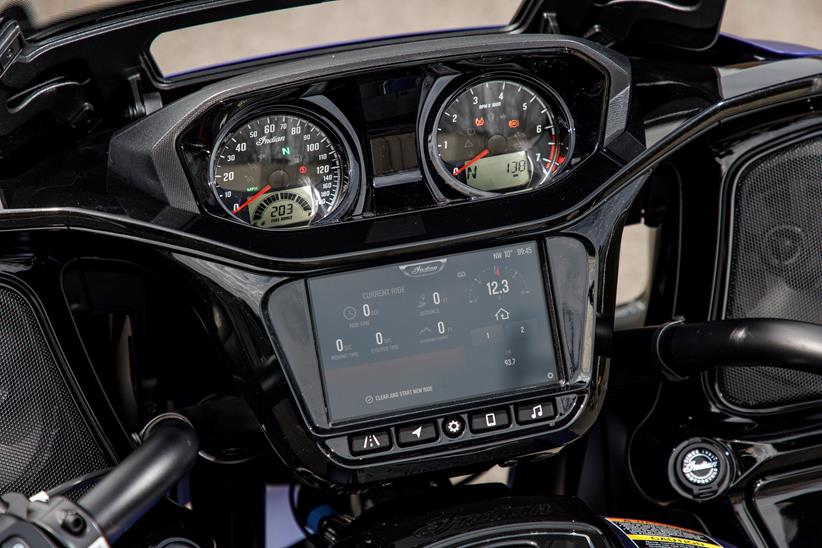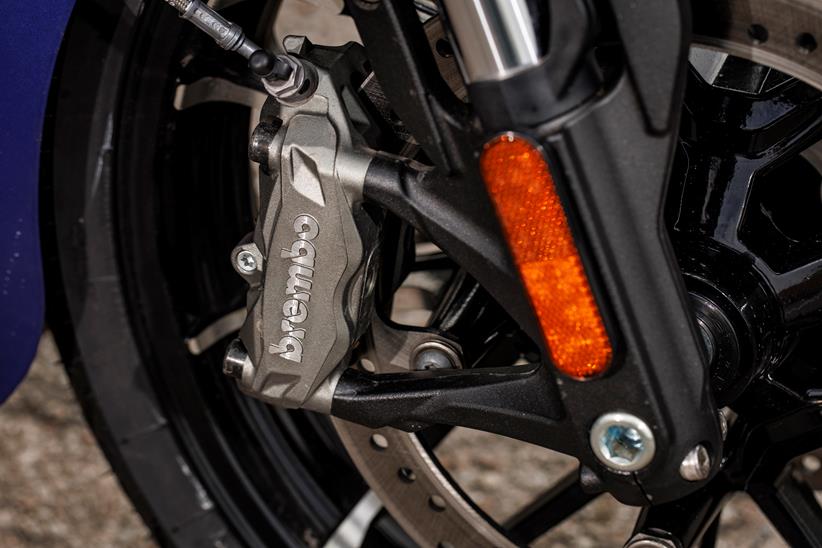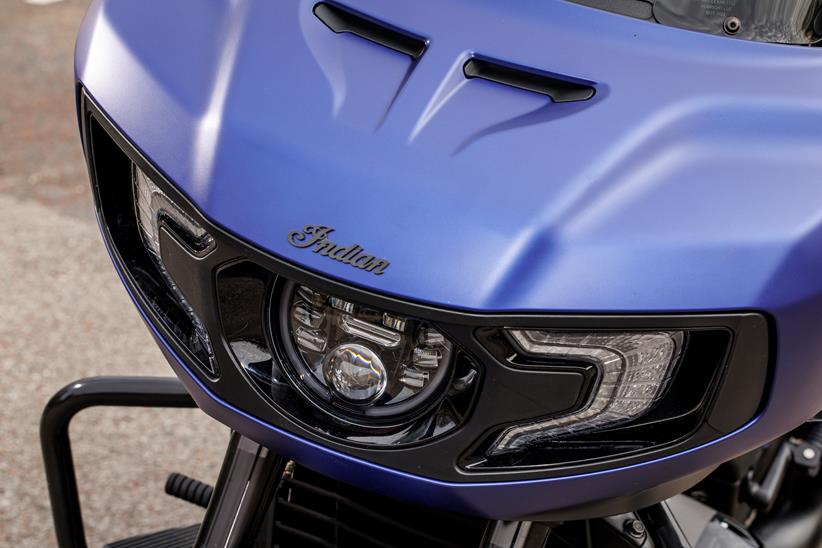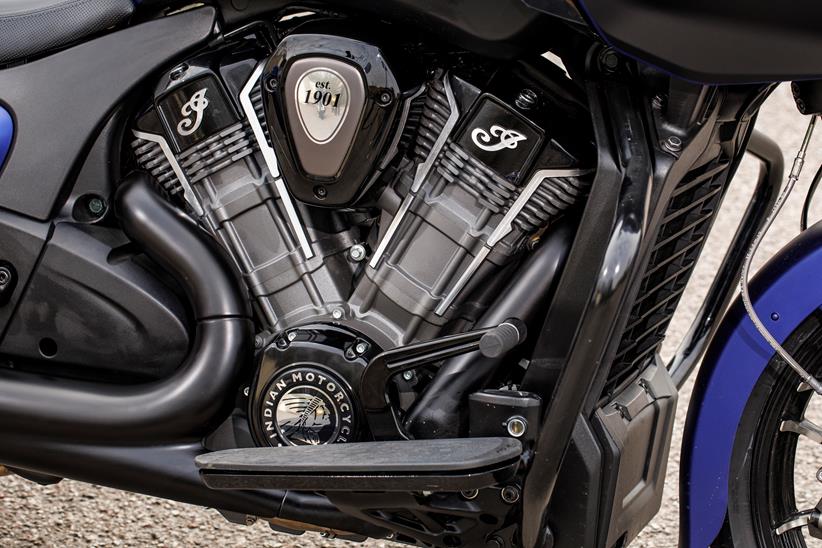Indian Challenger Dark Horse vs Harley-Davidson Road Glide | Battle for bagging rights!
Here’s a sentence I never thought I’d be writing – today we are testing two race reps from Harley-Davidson and Indian. No, seriously we are. Believe it or not, the Indian Challenger and Harley Road Glide form the base (in a very loose sense of the word) for each firm’s King of the Baggers race bike for a rip-snorting series in America.
For the uninitiated, King of the Baggers is basically two-wheeled racing insanity. Initially conceived as an invitational one-off race in 2020, the series has grown into a hotly-contested championship that sees heavily modified factory-supported baggers from Harley and Indian go head-to-head on track.
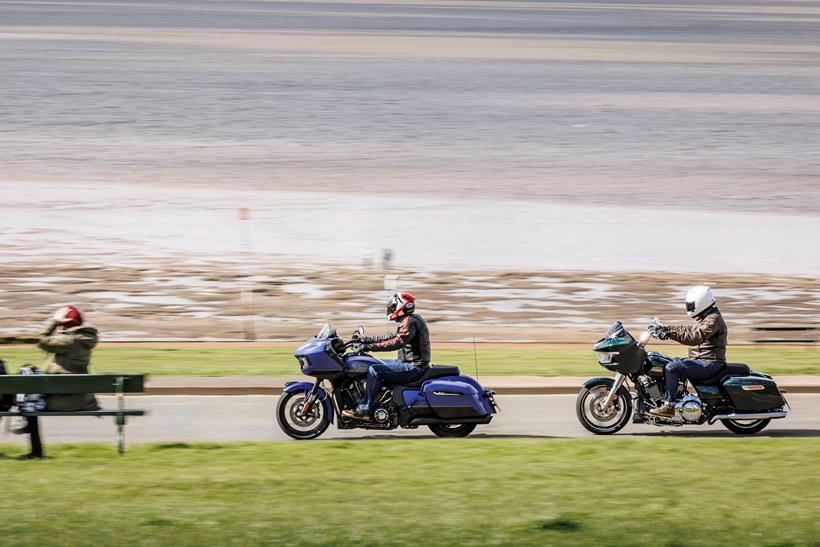
Absurd as the thought of a racing bagger sounds, a quick look on YouTube and you will soon be hooked as the spectacle of a grid full of 280kg bikes, complete with panniers and huge front fairings, ridden by top-level racers is utterly captivating. But the race bikes are so heavily modified that these bikes can barely be labelled as ‘race reps’.
‘They are tearing up race tracks in America but how do these two performance baggers fare on a trip to the British seaside?’
Then again, how close do you think a World Superbike machine really is to your road bike? The whole point of King of the Baggers is to capture riders’ attention and get them to at least consider trying a bagger.
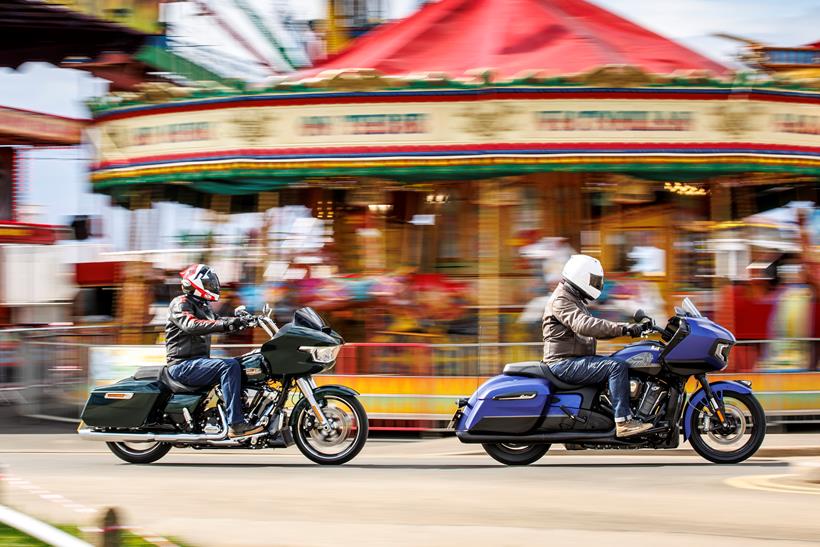
- Related: Watch MCN’s Long-term test of the Harley-Davidson Low Rider ST
So what’s the appeal? We grabbed the fobs (they are both keyless) to the updated Road Glide and Challenger, set the satnavs for the British riviera (Hunstanton), cranked up the sound systems and hit the highway. Well, the A47, which is like Route 66 but lined with more cabbage fields.
Dive into the detail:
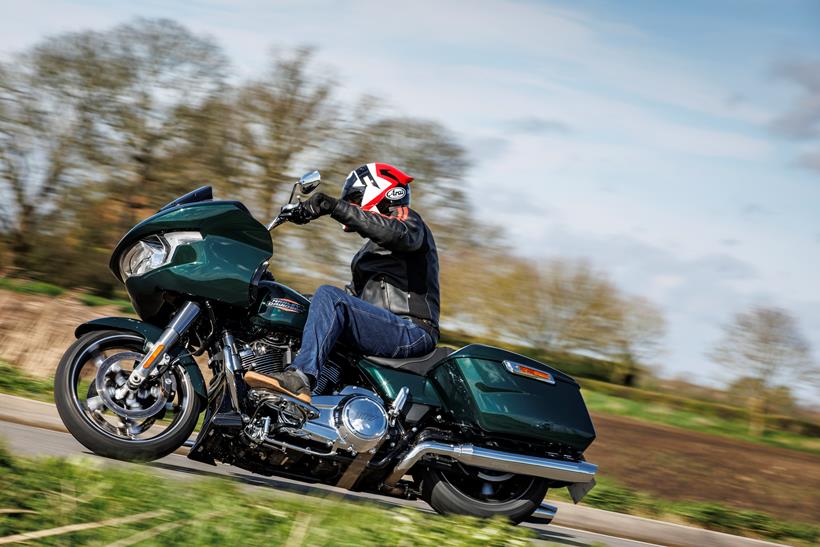
Harley-Davidson Road Glide
£27,295 (plus £500 for paint option)
- Engine 1923cc dual-cooled 8v V-twin
- Power 105.5 bhp
- Torque 129.2 lb.ft
- Fuel Capacity 22.7 litres
- Frame Tubular steel double cradle
- Suspension F: 49mm telescopic forks, non-adjustable. R: Twin Shocks, adjustable preload, one side remote.
- Front brake 2 x 320mm discs with four-piston calipers. Cornering ABS
- Rear Brake 1x300mm disc with four-piston caliper. Cornering ABS
- Seat Height 720mm
- Kerb Weight 380kg (kerb)
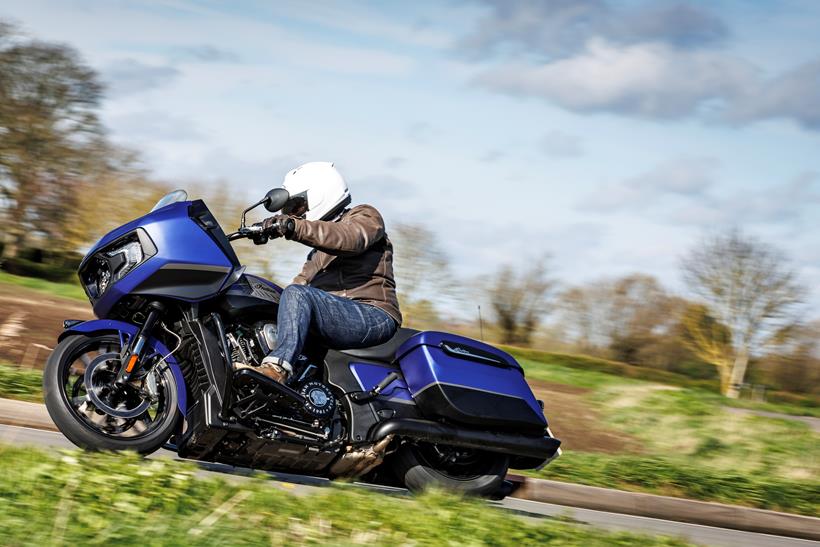
Indian Challenger Dark Horse
£27,195 (plus £700 for paint option)
- Engine 1768cc liquid-cooled SOHC 8v V-twin
- Power 120 bhp
- Torque 131.4 lb.ft
- Fuel Capacity 22.7 litres
- Frame Aluminium backbone
- Suspension F:43mm inverted forks, non-adjustable. R: Monoshock, adjustable (optional electronically)
- Front brake 2 x 320mm discs with four-piston Brembo radial calipers. Cornering ABS
- Rear Brake 1x298mm disc with two-piston caliper. Cornering ABS
- Seat Height 672mm
- Kerb Weight 381kg (kerb)
Riding a bagger, or any big-capacity cruiser for that matter, is a very different experience to a ‘normal’ bike. For a start you are dealing with a hefty old beast and loaded up with a rider and pillion, both of these bikes are topping half-a-ton. And that’s before you add in the effect of a mountain of fish and chips. All of which brings its own issues at low speed.
Anything below walking pace on a bagger is very tricky. While low seat heights allow you to get both feet securely on the ground, which is recommended at every stop, slow speed manoeuvres are perilous not only due to sheer weight but also the laid-back riding position.
With baggers you tend to have long handlebars for a relaxed riding stance, something that is exaggerated even more on the Road Glide with its tall hangers.
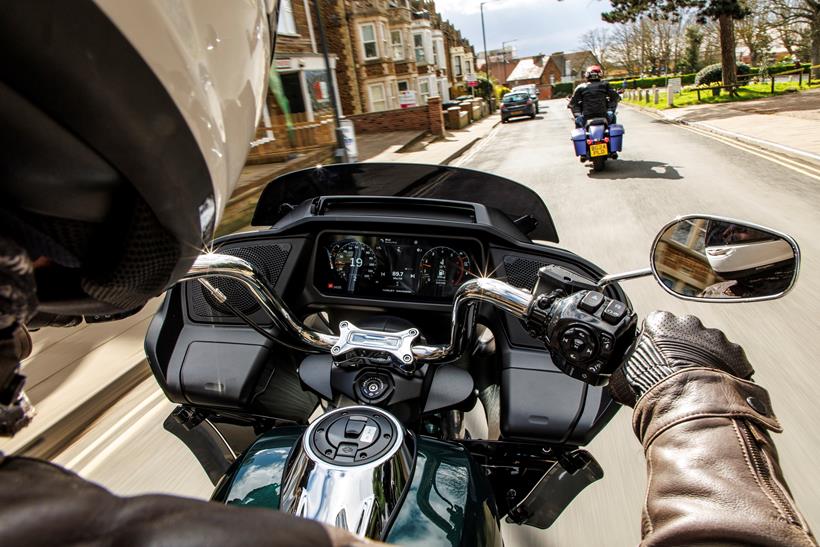
Swept back away from the headstock, these tillers disconnect you from what the front is doing and result in a real workout at walking pace as you battle to counteract the weight, something that is noticeably more challenging on the Harley than the lower-barred Indian. U-turns or any slow-speed work is certainly demanding but there is a positive side to this, and that comes when you are cruising. Which is what these bikes do best.
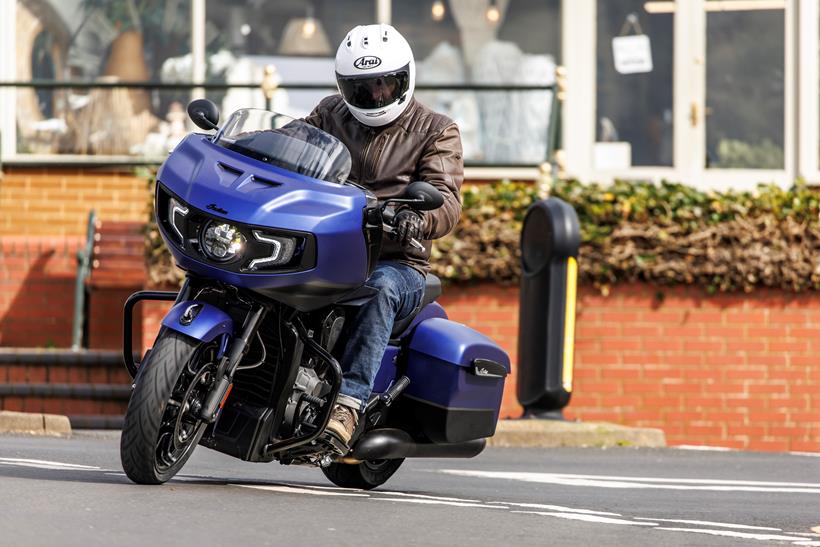
Sitting in a straight line at a constant speed, baggers start to make sense. Tuck in behind their huge front fairings and the miles drift past in comfort, especially if you are riding the Indian. As well as offering better weather protection, the Challenger comes with an electronically-adjustable screen, something the Road Glide lacks.

I find it odd that on a £28k tourer this fairly obvious necessity is missing on the Harley (both also lack heated grips) and without it I found the small screen (naturally there are taller accessory items) created lots of unwelcome buffeting on the top of my crash helmet, something the Indian’s screen on full height noticeably reduced.
Harley claim to have cut buffeting by 60% in the Glide’s 2024 update but as a six-foot-two rider I’m not convinced. I’d much rather have seen an adjustable screen added rather than a 200-watt amplifier for the upgraded speaker system – although Harley have to be commended on their new dash, which is beautifully designed and knocks spots off Indian’s effort.
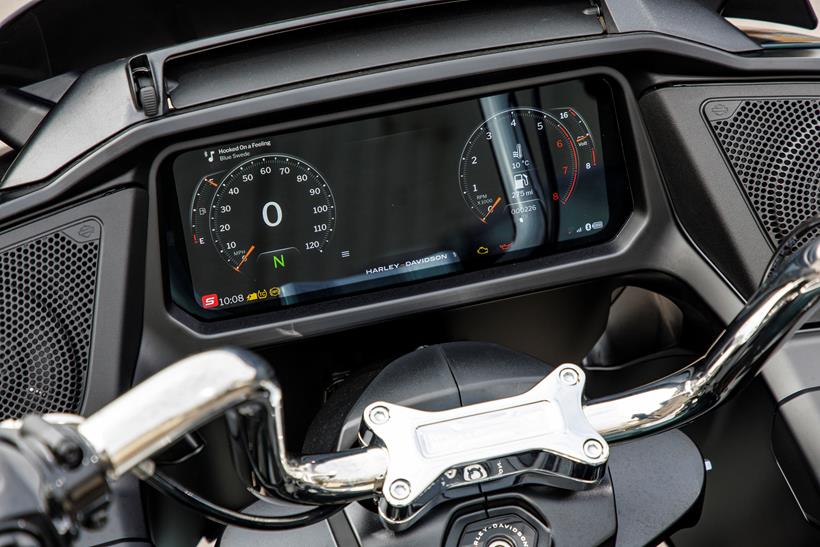
A few less buttons on the switchgear would be nice but owners will soon get to grips with the interface (the display is touchscreen so you can avoid using buttons altogether) and can effortlessly crank up the tunes while riding along.
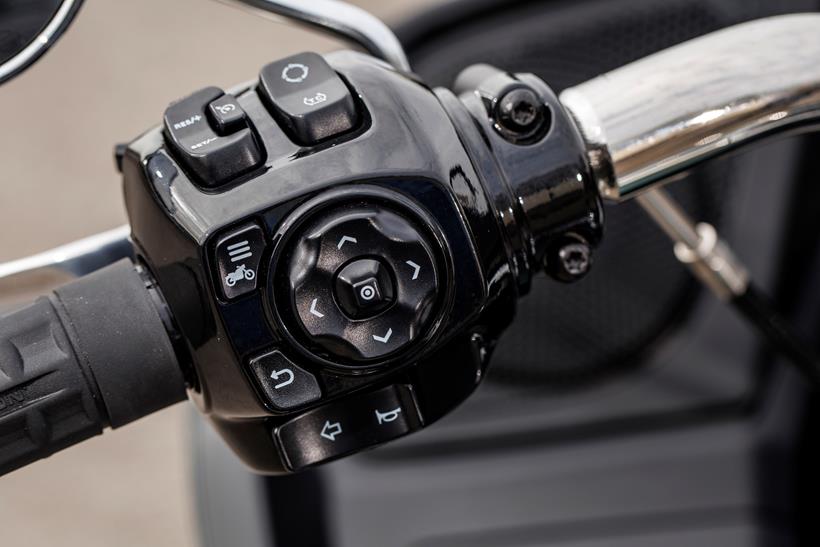
At a constant speed it’s easy to see why baggers appeal to the American market. Lolloping along at 60mph, these two massive V-twins are hardly breaking sweat (recording less than 1500rpm) and although the Harley’s Milwaukee-Eight is vibier than the Indian’s PowerPlus lump, it’s easily explained away as ‘character’. Until, that is, you need to shift gear or accelerate smoothly.
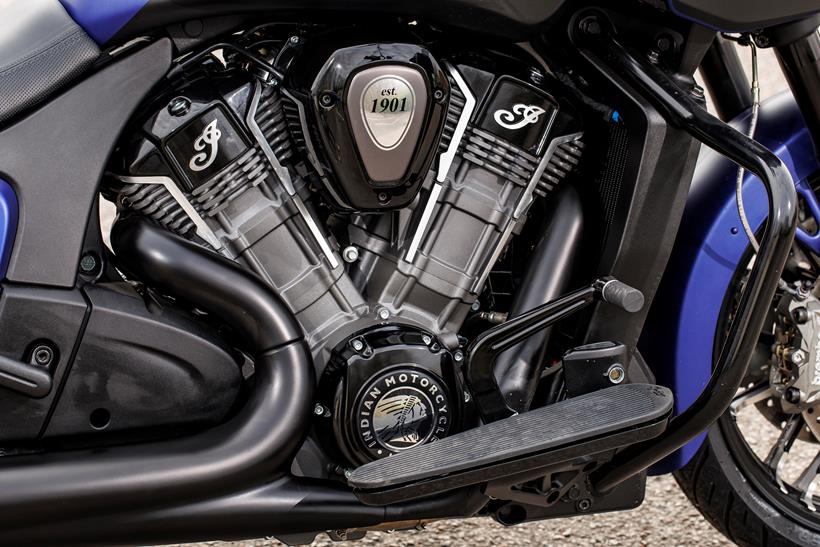
I know a huge part of the Harley ownership experience is an old-school feel but I’m always left wishing they would add a bit more refinement to their motors – after all, they have taken the step of going for water-cooled heads (if not the whole engine) so why not go a bit further and iron out some more rough edges?
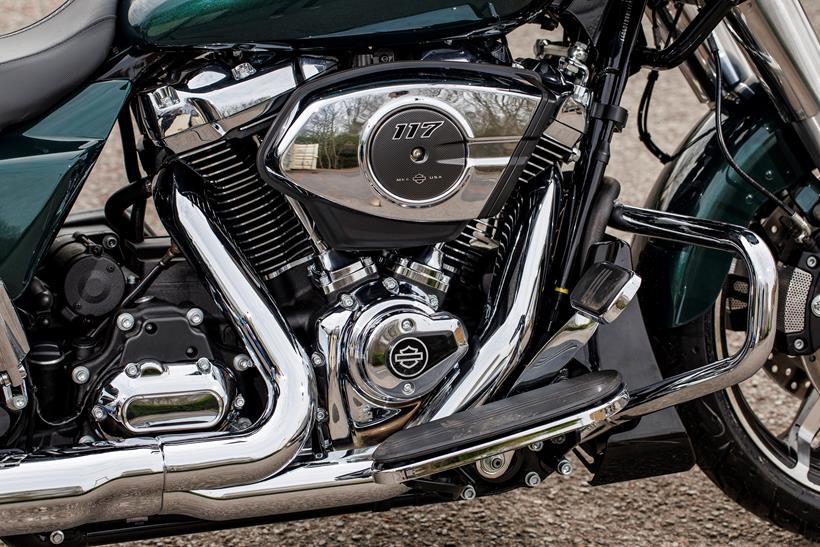
- Related: Do you long for the American dream ride? But want less baggage in your life? Check out MCN’s review of the Harley Davidson Sportster S.
Changing gear on the Road Glide is accompanied by a massive clonk where the Indian is far smoother and I found the Harley’s throttle response quite brutal. You can calm it down by changing the power mode (both bikes have variable power modes as well as angle-responsive TC and ABS) but when that 1923cc V-twin first kicks from a closed throttle, you know about it.
Harley may well argue this thump of power gives the Road Glide a more dynamic nature (well, it is a race rep) but for my money the Indian’s engine is smoother, better on the throttle, slicker at changing gear and feels faster to pick-up speed.
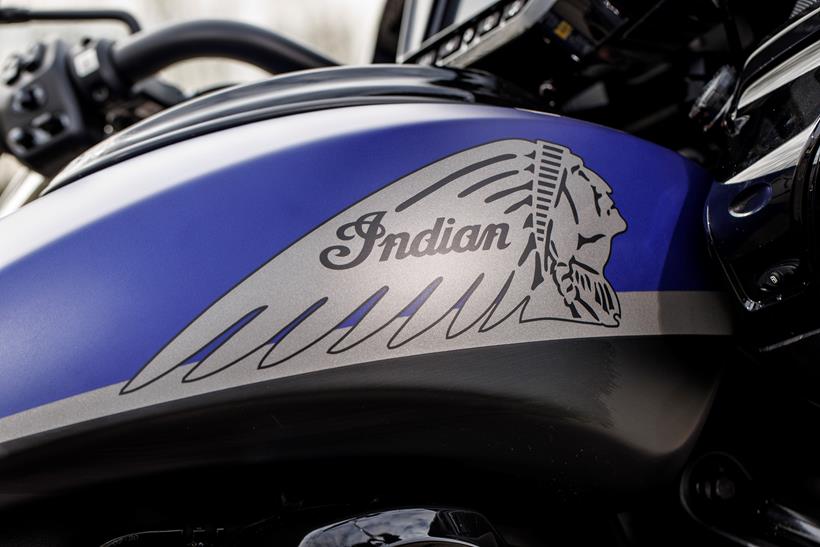
‘Indian add modern-feeling touches’
But what about their handling when things get twisty? Here is a bit of a shock, both the Challenger and Road Glide are good handing bikes – that said, there is a caveat.
They are sweet handling bikes considering their size, length and weight, which are all rather substantial! Take in some smooth bends on these baggers and yes, they can certainly justify their ‘performance’ bagger tags and the Indian’s twin Brembo radial caliper brakes have lovely power and feel, noticeably more than the Harley’s own-brand conventionally-mounted items.
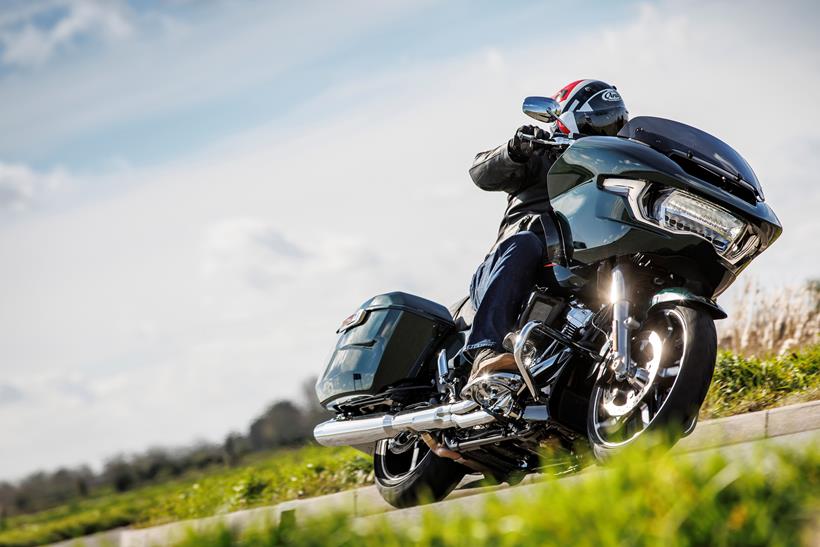
While undeniably taking a bit of effort to get either bike to change direction, you can enjoy corners on these bikes and their weight ensures that they are securely planted to the ground when you’re mid-bend. You wouldn’t want to take one on track but you can certainly roll along a smooth and twisty B-road at a merry pace.
Introduce a few bumps and the Harley isn’t as assured, with its shocks being unpleasantly harsh in their action, which is both a shame and another oversight as they have been upgraded for 2024 with extra travel (and a remote preload adjuster added to one shock while the other is collar-preload adjusted) but I’d say not by enough.
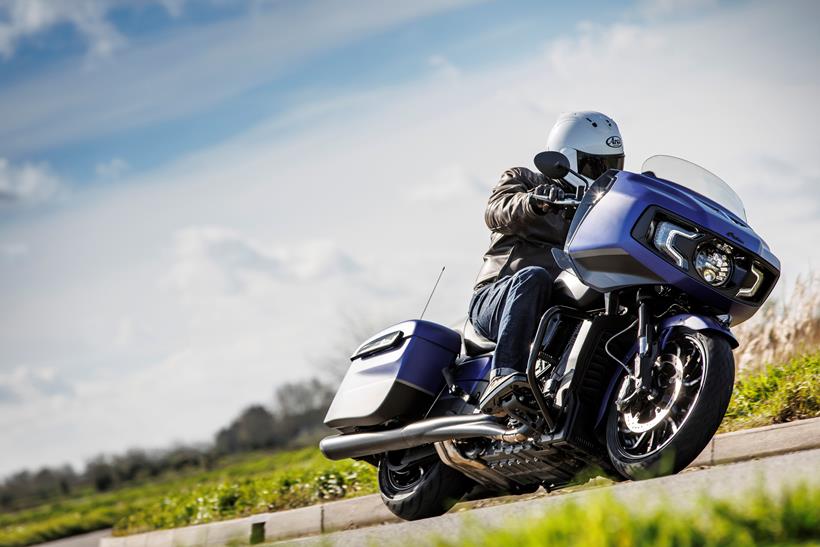
Looking at their price, you also wonder why adjustability is lacking on either bike’s forks but to be fair the Indian deals fairly well with bumps while the Harley struggles to cope. I rode a Harley with Öhlins suspension recently and it was so much better than stock, why don’t they arm the Road Glide with better suspension and maybe stick with just 100W of hi-fi? I assume it’s the same argument as with the overly feisty throttle – American riders tend to cruise in straight lines and their buying decision is more down to style, image and comfort than handling or a refined gearbox.

And that’s why I tend to admire Indian’s products more because they aren’t afraid to challenge convention, integrating more modern-feeling touches into their bikes at the expense of old-school character and authenticity.
While it would be great to see Harley or Indian make a bike more closely associated with a King of the Baggers-style machine, their core audience probably wouldn’t want one. When you’re dropping nearly £30k on a bike, you want that all-American rumble you get with a big old lump of metal and on that score, the Harley ticks all the right boxes, while despite being better to ride, the Indian somehow lacks that distinctive Americana vibe.
Verdict:
‘Bagger for modern life’
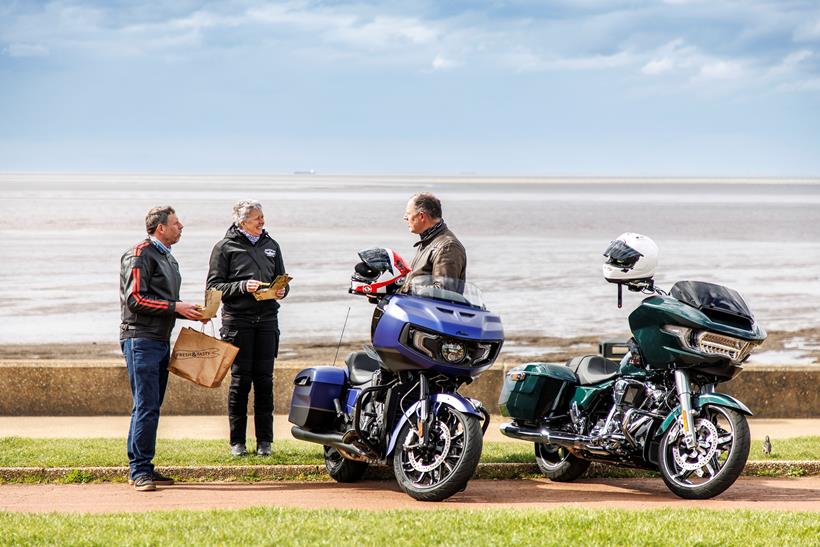
In terms of performance, comfort and even (arguably…) looks the Challenger is a better motorcycle than the Road Glide… especially if you plan on regularly taking a pillion. It is just more refined and with far fewer of the annoying old-school clunks. The Indian is a bagger that feels built for modern life. Yes, its TFT dash is less impressive than the Harley’s but overall it’s a more polished product. But there’s a battle of head and heart here.
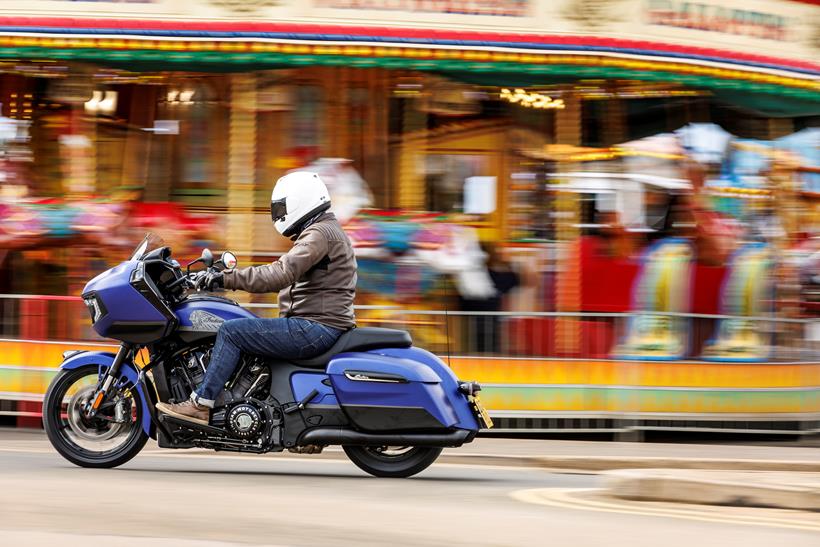
If you buy the Indian you know that every person who comes up to you will say ‘is that a Harley?’ and you will have to explain who Indian are. Thankfully, Indian have a rich heritage (they were founded before Harley) but over here they don’t have the same brand recognition or cachet. And while they have owners groups with organised events to draw you into the community and all the extras that come with that, they don’t have the same scale as Harley. Plus, when you’re paying £28k for a bike, depreciation is also a consideration, which is another area where Harley are strong.
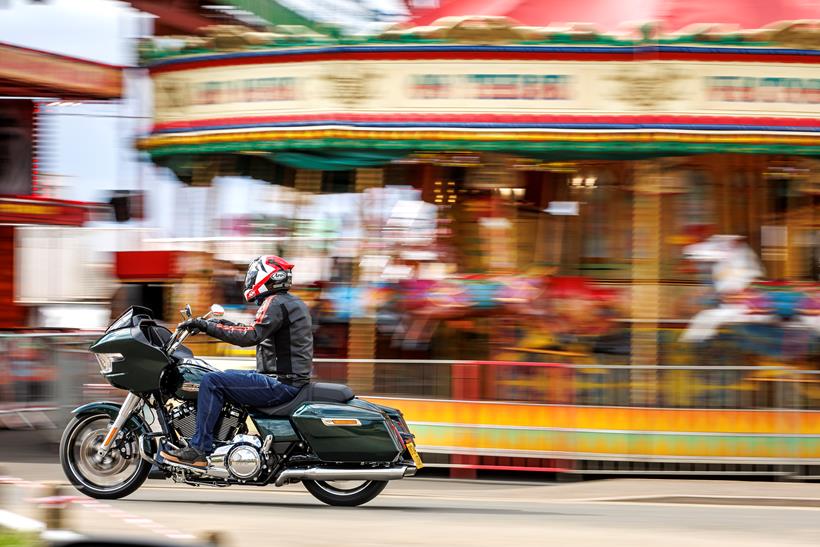
So what’s the answer? If you want the more accomplished ride, buy the Indian. If you want a bike that comes with an entire lifestyle in its back pocket, the Harley delivers that effortlessly.
Personally, I’d buy a lighter-weight H-D that feels more suited to the UK’s tight, bumpy and crowded roads, like the Low Rider ST – which is £7k cheaper.
Likes:
- Torque-laden V-twins
- The Indian’s adjustable screen and comfort levels
Dislikes:
- Intimidating at low speed
- Harley’s standard pillion provision is a bit sparse
Pillion Opinion:
‘Built with solo riding in mind’
– Alison Silcox, Office Manager (5ft 10in)
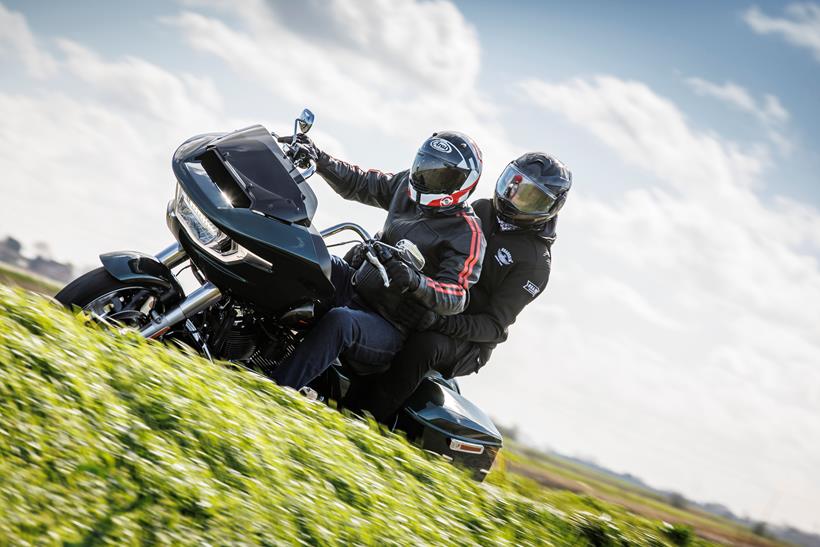
- Get the look: The Roadskin Easyrider II armoured hoodie tried and tested by MCN.
“I’ve done a lot of pillion riding and, as standard, the Road Glide is the worst bike I have ever been on the back of. Which came as a big surprise because I assumed it would be really good – it’s a Harley, aren’t they designed for touring? “The Harley’s pillion pad (it isn’t called a pillion seat, that’s an accessory item) is not only very small but is angled backwards, meaning you tend to slide off the tail of the bike (or at least feel like you are) and to counteract this sensation you end up continually tensing your core, which is tiring.
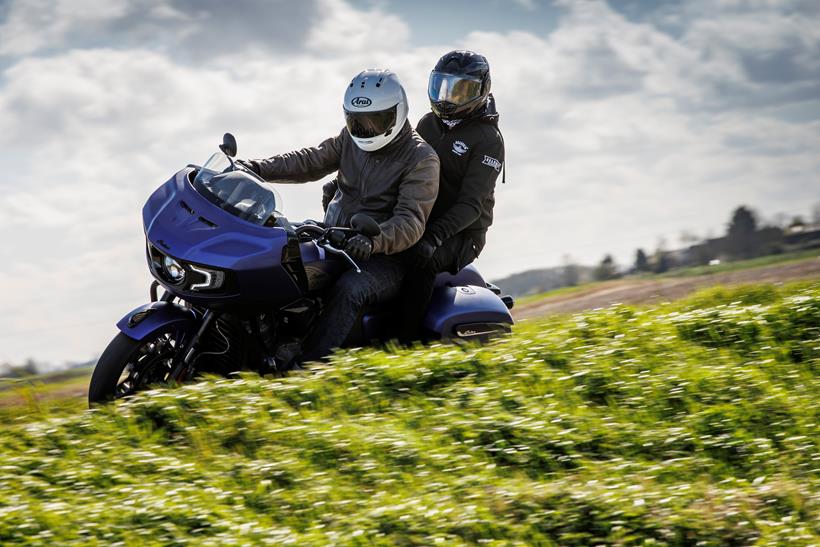
The panniers dig in on the back of your legs as the pillion pegs are very high, which gets uncomfortable after a very short time, and when combined with the harsh shock – which fires you out of the seat when you hit a big bump – it’s all very disconcerting. I was nervous on the Harley and never happy being a pillion, it was far from a relaxing experience. If you take a pillion, invest in the dedicated pillion seat, which is £644.47 as part of the Day-Tripper package and includes a back rest.
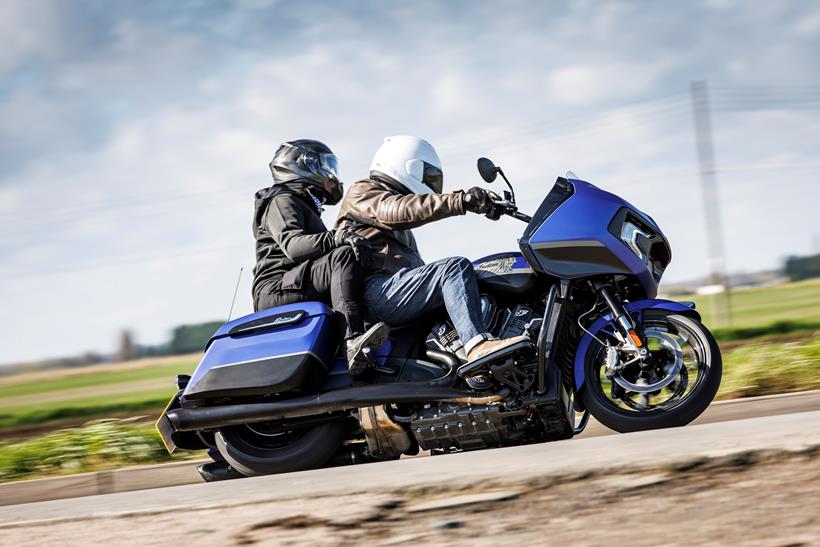
“The Indian was much better. Its pillion seat is flat and quite wide, which was reassuring, and the panniers are positioned much better and actually helped me slot into the bike and secure myself, which was good. The Indian’s ride quality was also much better than the Harley’s with less of a jerk between gear changes and the suspension far more plush. It’s just a better pillion bike but in truth, I was disappointed by both bikes, neither is great for passengers. Baggers are clearly designed with solo riding in mind.”
While you’re here: How MCN tests bikes
Our highly experienced team of road testers grind out hundreds of miles, come rain or snow, on the UK’s pothole-ridden roads to decide which bike is best in a particular category.
Using years of riding and racing experience (on and off-road), our expert journalists are able to assess the capabilities of a machine and translate that into understandable language to help MCN’s readers make an informed buying decision. Pitching bikes against their main rivals, we aim to give a conclusive verdict on which bike is best for your needs and your budget.
Using their considerable knowledge of the motorcycling market and audience, they can put a motorcycle into context and deliver a verdict that means something to anyone considering buying a particular machine, whether it be a cutting-edge, 200bhp sportsbike, a tall adventure weapon or a low-capacity 125cc machine.
When we ride the bikes in the UK we tend to do at least one full day of riding on various different types of road and in varying conditions. Our testers will then spend another day riding the bike – with rivals – to get images and video footage for our print and online reviews.
We will also, often, weigh the bikes, speed and dyno test them to see just how accurately the manufacturer claims are in these areas to give a more empirical assessment.
